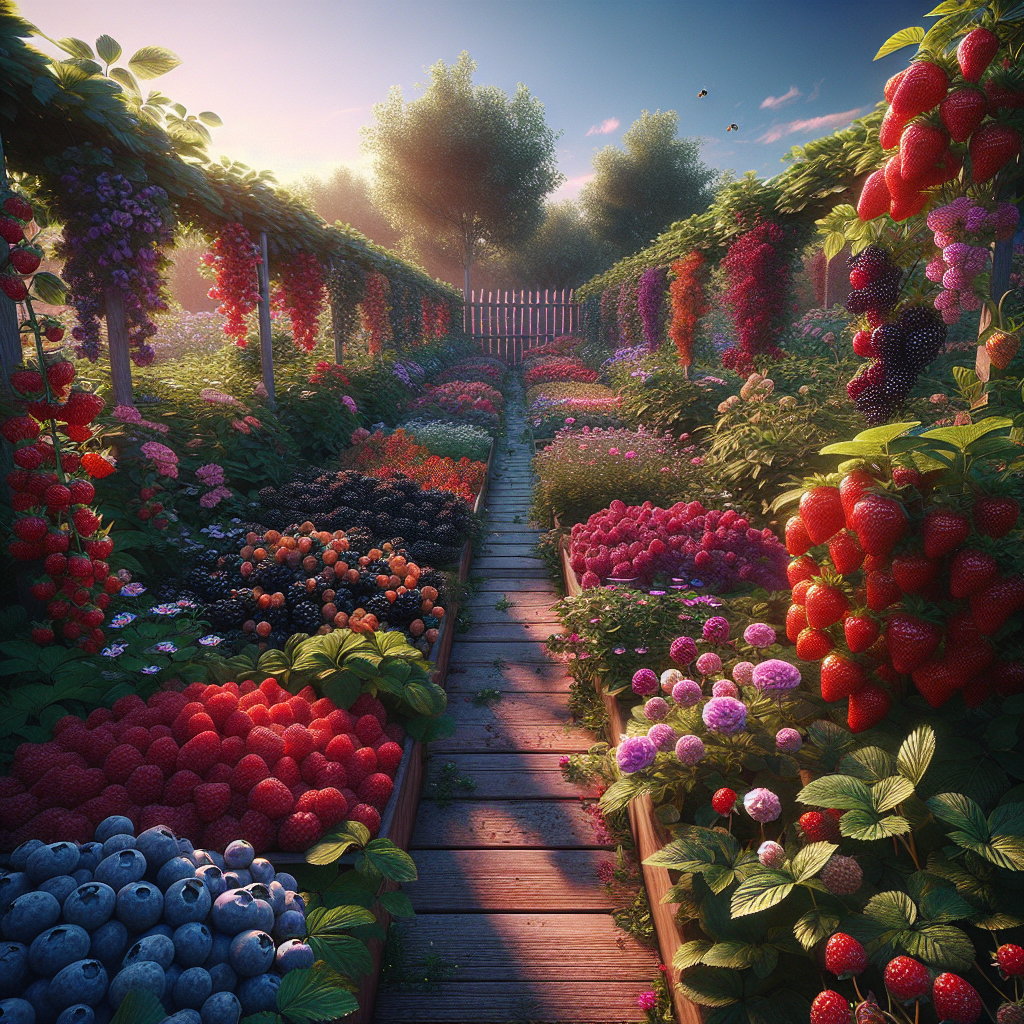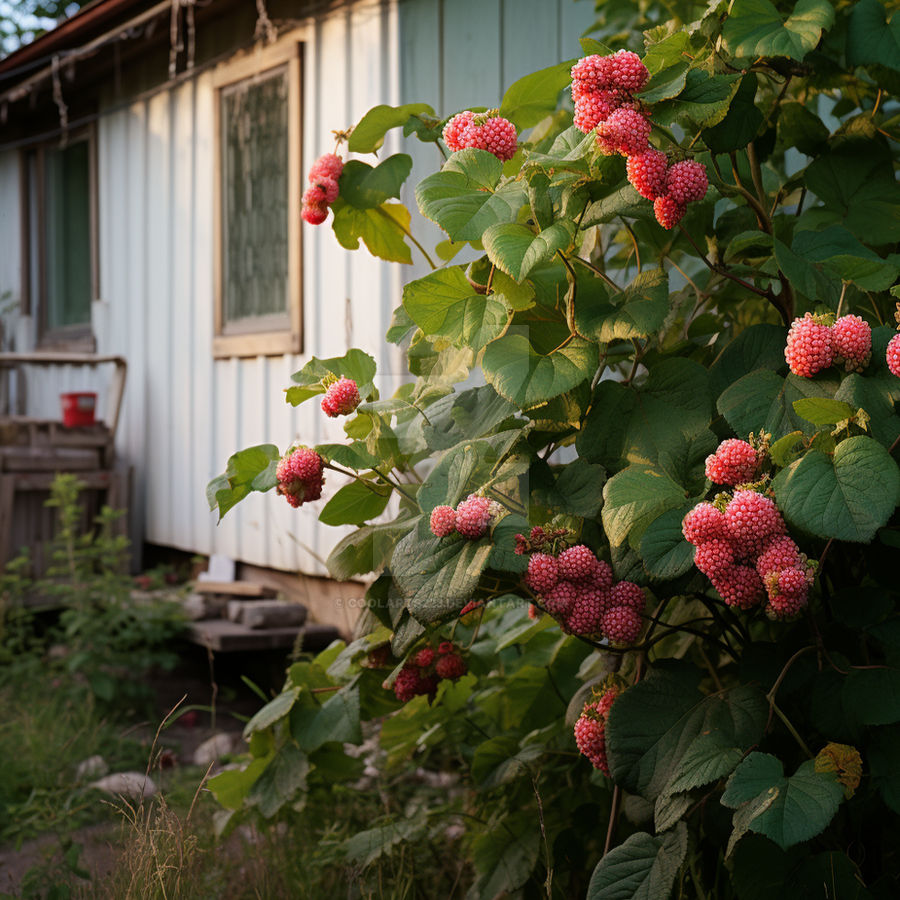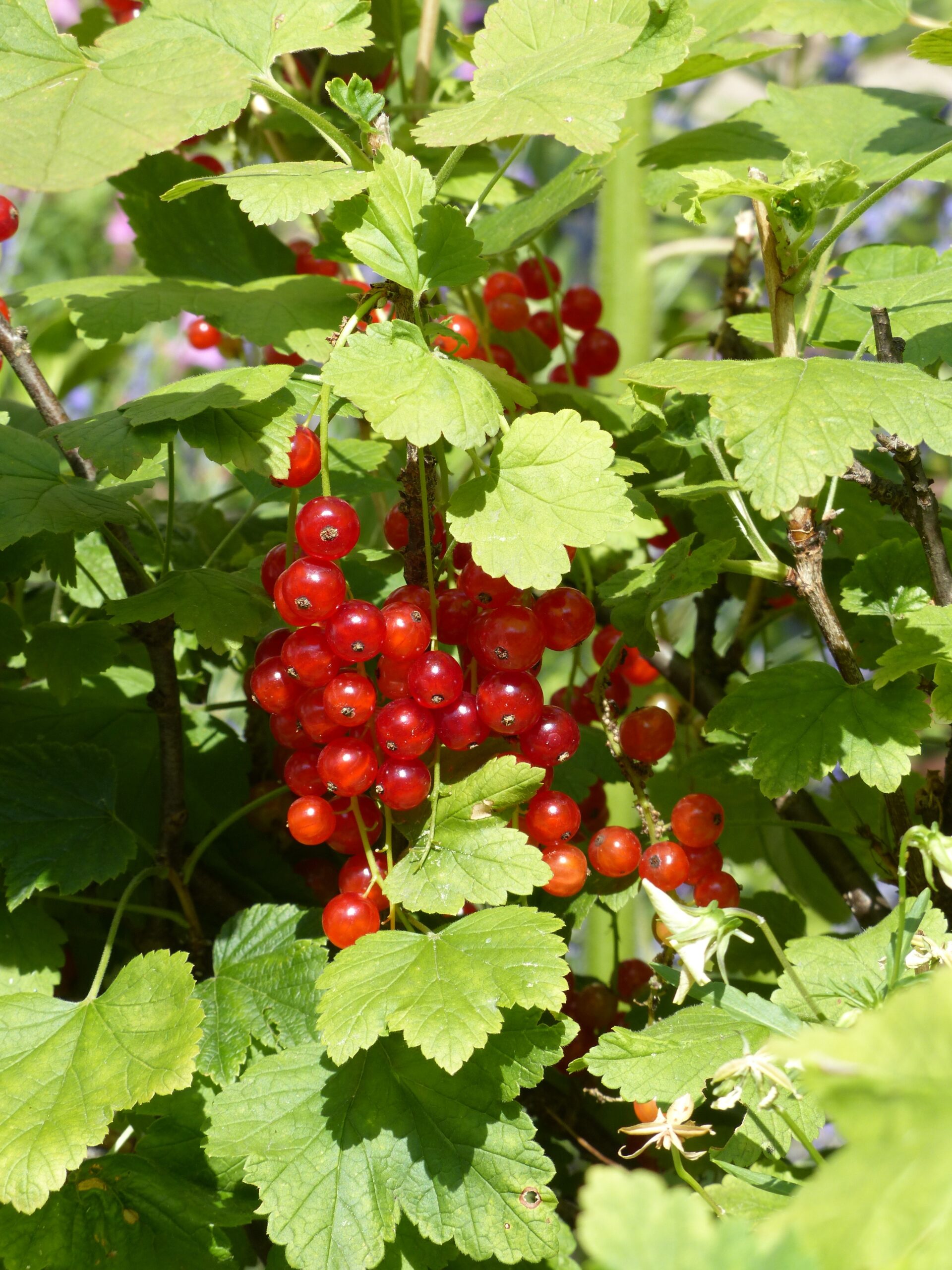Contents

Key Takeaways
-
Identify the best berries for your climate: strawberries, blueberries, raspberries, blackberries, and currants.
-
Understand soil and sun requirements to ensure your berry plants thrive.
-
Discover the joys of growing strawberries, even in small spaces.
-
Learn about the soil pH necessary for blueberries and how to grow them in containers.
-
Get tips on how to train raspberries and manage blackberry brambles for a bountiful harvest.
Embarking on a Berry Adventure
There’s something incredibly satisfying about strolling through your garden and plucking juicy berries straight from the vine. It’s a simple pleasure that brings joy to the day and flavor to your table. If you’re looking to start a berry patch or enhance your existing one, you’re in for a treat. The five berry varieties we’ll explore are not just delicious; they’re also packed with nutrients and can add a splash of color to your garden.
Selecting the Right Berries for Your Climate
Before you get your hands dirty, it’s essential to choose berries that will flourish in your garden’s climate. Strawberries, for instance, are quite versatile and can grow in a range of environments. However, blueberries require acidic soil and a specific pH range to really thrive. Raspberries and blackberries enjoy similar conditions, but their growth habits and care are quite different. And don’t forget about currants; these berries can tolerate cooler climates and even thrive in partial shade.
Optimizing Garden Space for Berry Plants
Garden space is precious, and with a bit of planning, you can maximize both your space and your berry yield. Consider vertical gardening for vining berries like raspberries and blackberries. Strawberries can even be grown in hanging baskets or in tiered planters, making them perfect for small gardens or patios. When it comes to blueberries and currants, container gardening is an excellent option if you’re dealing with limited space or unsuitable soil.
The 5 Stars of the Berry World
Let’s dive into the colorful world of the top five berries to grow in your garden. We’ll look at what makes each one special, how to care for them, and tips for getting the most out of your harvest.
1. Strawberries: Sweetness in Small Packages

“Strawberry Garden Images | Free Photos …” from www.rawpixel.com
Strawberries are the darlings of the berry world, and for good reason. They’re not only delightful to eat but also incredibly rewarding to grow. With varieties that range from everbearing to day-neutral, you can enjoy a steady supply of strawberries throughout the growing season. And the best part? You don’t need a lot of space to grow them.
Adapting to Soil Types and Sun Requirements
Strawberries are quite adaptable, but they do have some preferences. They love well-drained soil rich in organic matter and require a sunny spot to produce the sweetest fruit. If your soil is heavy clay or too sandy, consider amending it with compost or growing your strawberries in raised beds or containers.
Maximizing Yield with Proper Spacing and Care
To get the most out of your strawberry plants, space them about 18 inches apart to allow for ample growth. Regular watering is crucial, especially during the fruiting period. A layer of mulch can help retain moisture, suppress weeds, and keep the berries clean. Keep an eye out for runners, too—these can be trimmed or used to propagate new plants.
Remember, strawberries are perennial, so with proper care, your plants can produce fruit for several years. Pinch off flowers during the first year to encourage stronger plants that will yield more berries in subsequent seasons.
Example: If you’re short on space, try growing strawberries in a hanging basket. Not only does it save on ground space, but it also keeps the fruit away from slugs and makes for a beautiful, edible display.
2. Blueberries: Antioxidant Powerhouses

“File:Blueberries 3.jpg – Wikimedia Commons” from commons.wikimedia.org
Blueberries are not just a superfood for your health; they’re also a super choice for your garden. These berries are brimming with antioxidants and can be a stunning addition to your landscape with their delicate flowers and fiery fall foliage. But to really succeed with blueberries, you need to understand their specific needs.
Understanding the Importance of Soil pH
Blueberries require acidic soil with a pH between 4.5 and 5.5. If your soil doesn’t naturally meet these conditions, you can lower the pH by adding sulfur or choosing a specially formulated soil mix for acid-loving plants. Regular testing of your soil’s pH is crucial to ensure your blueberries have the perfect environment to thrive.
Now, let’s get started on writing the next part of the article.
Training Raspberries with Simple Support Systems
Raspberries are delightful berries that can give you a bountiful harvest, but they do require some training. As they grow, they’ll need support to keep them from sprawling all over and to make picking easier. A simple trellis or a system of wires strung between posts will do the trick. This not only keeps your plants tidy but also promotes better air circulation, which helps prevent fungal diseases.
3. Raspberries: Summer Delights or Fall Surprises

“Raspberry bushes near summer dacha …” from www.deviantart.com
Whether you’re a fan of the sweet summer varieties or the richly flavored fall types, raspberries have something to offer. These berries can be divided into two main categories: everbearing, which produce fruit twice a year, and summer-bearing, which give you one large harvest. Choosing the right type for your garden depends on your climate and how you like to enjoy your berries.
Choosing Between Everbearing and Summer-bearing Varieties
When selecting raspberries, consider your harvesting preference. Everbearing varieties will provide a modest crop in June and a larger one in the fall, while summer-bearing varieties offer a single, abundant harvest. If you’re looking for a continuous supply of fresh berries, everbearing might be the way to go. However, if you’re into preserving and want a lot of berries at once, summer-bearing will suit you better.
Most importantly, raspberries love the sun, and they’ll need a spot in your garden that receives full sunlight for the best fruit production. They’re not too picky about soil, as long as it’s well-draining. Adding organic matter will help to keep the roots happy and healthy.
Example: If you’re growing everbearing raspberries, you might pick a few ripe berries every other day in the summer, then enjoy a larger harvest in the fall. This staggered production can be perfect for fresh eating.
4. Blackberries: Tame the Brambles for Bumper Crops

“Blackberries close up: Creative Commons …” from www.flickr.com
Blackberries are known for their vigorous growth and can quickly become unruly if not managed properly. But don’t let that discourage you. With some basic training and pruning, you can keep blackberry brambles under control and reap the rewards of a generous harvest.
Choose a sunny spot for your blackberries, as they thrive in full sunlight. They’re not as particular about soil pH as blueberries, but they do appreciate fertile, well-draining soil. Adding compost or aged manure can give them a great start.
Implementing Effective Pruning Strategies
Pruning is critical when it comes to blackberries. They produce fruit on two-year-old canes, so it’s important to distinguish between the canes that will bear fruit this year and those that will fruit next year. After harvesting, prune out the canes that have fruited, leaving the new canes to produce the next season’s berries.
Because blackberries can become invasive, it’s also a good idea to regularly check for and remove any suckers or rogue canes that may pop up outside your designated berry area.
Guarding Against Common Pests and Diseases
Like any plant, blackberries can be susceptible to pests and diseases. Regular inspection of your plants is key to catching any issues early. Look out for signs of rust, cane blight, and powdery mildew. As for pests, keep an eye out for spider mites and aphids. Removing affected parts of the plant and using organic pest control methods can help keep your plants healthy.
Remember to clean up fallen leaves and fruit, as these can harbor diseases and pests over the winter. A little bit of garden hygiene goes a long way in preventing problems.
5. Currants: Berries with a Tart Twist

“soft fruit, flowering plant …” from pxhere.com
Currants are often overlooked, but they’re a wonderful addition to any berry garden. They come in red, white, and black varieties, each with its own unique flavor profile. Red and white currants are tangy and sweet, perfect for fresh eating or making into jellies. Black currants have a stronger, more pungent flavor and are excellent for cooking and baking.
Exploring Red, White, and Black Currant Varieties
When choosing currants, consider what you want to use them for. Red and white currants are great for fresh snacking and have a lovely, translucent appearance that makes them stand out in fruit salads. Black currants are packed with vitamin C and are ideal for culinary uses, such as sauces and liqueurs.
Therefore, understanding the growth habits and needs of each type is essential. Red and white currants grow on bushes that can reach up to 5 feet tall, while black currants tend to be smaller and more spreading.
Recognizing the Benefits of Shade Tolerance
One of the advantages of currants is their shade tolerance. Unlike most berries that require full sun, currants can produce a good crop even in partial shade. This makes them an excellent choice for garden spots that don’t get all-day sunlight.
They’re also relatively easy to care for, with few pest problems. Pruning to maintain an open bush will encourage airflow and help prevent disease.
Example: Currants can be a beautiful ornamental plant as well as a productive fruit bush. Their bright berries and attractive foliage can add visual interest to any garden space.
The Secrets to Berry Gardening Success
Now that you know more about the top berries to grow in your garden, let’s talk about the secrets to getting the most out of your plants. Berry gardening success comes down to a few key practices that will ensure your plants are healthy and productive.
Proper Watering Techniques for Juicy Harvests
Berries are mostly water, so it’s no surprise that they need plenty of it to develop those plump, juicy fruits we all love. The key is consistent watering. Berries don’t like to dry out, but they also can’t tolerate soggy roots. Aim for a balance by providing a deep watering once or twice a week, depending on your climate and weather conditions.
Using mulch around your berry plants can help retain moisture, reduce water evaporation, and keep the roots cool during hot spells. Just be sure not to pile the mulch directly against the plant stems to prevent rot.
Fertilizing: Feeding Your Berries for Optimal Growth
Berries need the right nutrients to flourish. A balanced, slow-release fertilizer applied in early spring can give your plants the boost they need to produce bountiful fruit. Be cautious not to over-fertilize, as this can lead to excessive foliage growth at the expense of fruit production.
Organic options like compost, fish emulsion, or well-rotted manure are excellent choices for feeding your berries and improving soil health.
Organic Pest Control: Keeping Your Berries Safe Naturally
While it’s important to protect your berry plants from pests, it’s equally important to do so in a way that’s safe for you and the environment. Organic pest control methods, such as introducing beneficial insects, using neem oil, or employing barriers like netting, can be very effective.
Encouraging a diverse ecosystem in your garden can also help control pests naturally. Companion planting with flowers and herbs can attract beneficial insects that will prey on common berry pests.
Remember, the goal is to enjoy your berries, not just grow them. By following these tips and giving your plants the attention they need, you’ll be well on your way to a garden full of sweet, sun-ripened berries. Happy gardening!
The Harvest: From Garden to Table

When you’ve nurtured your berry plants through the growing season, the harvest is your sweet reward. There’s a certain art to harvesting berries at just the right time to capture their full flavor and nutritional value. Let’s walk through how to know when your berries are ready and the best ways to enjoy them.
Knowing When Berries are Ripe for Picking
Harvest time can vary depending on the type of berry and your climate, but there are some general signs to watch for. Strawberries are ready when they are uniformly red and the seeds are easy to see. Blueberries will take on a deep blue hue and should come off the stem with a gentle tug. Raspberries and blackberries will also detach easily when they’re ripe, and their colors will deepen. Currants should be firm and full-colored, whether they’re red, white, or black.
The best way to test if berries are ripe? Taste one! If it’s sweet and bursting with flavor, it’s time to start picking.
Harvesting and Storage Tips for Peak Freshness
When harvesting, be gentle to avoid bruising the berries. Use a shallow container to prevent them from getting squashed under their own weight. Berries are best used immediately but can be stored in the refrigerator for a few days if necessary. Spread them out on a tray covered with paper towels to absorb any excess moisture and keep them from spoiling quickly.
If you have an abundance of berries, consider freezing them. Lay them out on a baking sheet to freeze individually, then transfer them to a freezer bag. This way, they won’t clump together, and you can enjoy your garden’s bounty long after the season has ended.
Innovative Ways to Enjoy Your Homegrown Berries
There are endless ways to enjoy your homegrown berries. Eat them fresh, add them to cereal or yogurt, bake them into pies and muffins, or transform them into jams and jellies. You can also blend them into smoothies or freeze them for a refreshing, healthy snack. Don’t be afraid to get creative and try new recipes that highlight the unique flavors of each berry type.
And let’s not forget the joy of sharing. Berries from your garden make delightful gifts for friends and neighbors. There’s nothing quite like the pleasure of giving a basket of freshly picked berries, a true labor of love.
Frequently Asked Questions

What Are the Most Common Mistakes When Growing Berries?
The most common mistakes include not preparing the soil properly, planting in the wrong location, over or under-watering, neglecting to prune, and failing to protect the plants from birds and pests. Address these issues early on, and you’ll set the stage for a thriving berry patch.
How Can I Protect My Berry Plants from Birds and Animals?
Birds love berries as much as we do, so it’s essential to protect your plants. Netting is the most effective way to keep birds away. Install it before the berries ripen to prevent birds from getting a taste. For ground critters, a fence may be necessary. Just make sure it’s buried a few inches into the ground to deter diggers like rabbits.
Can I Grow Different Types of Berries Next to Each Other?
Absolutely! In fact, planting different types of berries together can be beneficial as it can extend your harvest season and attract more pollinators to your garden. Just be mindful of each type’s specific needs and space them accordingly to ensure they have enough room to grow and thrive.
Are There Berry Varieties That Can Thrive in the Shade?
While most berries prefer full sun, some can tolerate partial shade. Currants and some varieties of raspberries can still produce fruit even if they don’t receive all-day sunlight. If your garden has shaded areas, these berries could be a perfect fit.
How Long Does It Take for Berry Plants to Produce Fruit?
The time it takes for berry plants to bear fruit varies. Strawberries can produce fruit the same year they are planted, especially if you choose a day-neutral variety. Blueberries, raspberries, and blackberries typically take a year or two to start producing. Currants can take a couple of years as well. Patience is key, but the wait is well worth it when you taste your homegrown berries for the first time.
Embarking on the journey of growing your own berries is a delightful endeavor that rewards you with fresh, flavorful fruits right from your backyard. With the right care and a little bit of patience, you can enjoy a bountiful harvest that brings joy to your table and your taste buds. So, grab your gardening gloves, and let’s grow some berries!
Gardening is not only about beautifying your home or harvesting fresh produce; it’s also an excellent way to improve your physical and mental well-being. Engaging in therapeutic gardening activities can be particularly beneficial, offering a peaceful retreat and a sense of satisfaction. Whether you’re an experienced gardener or just getting started, the act of planting and nurturing plants can be a deeply rewarding experience.



